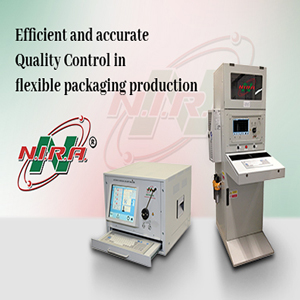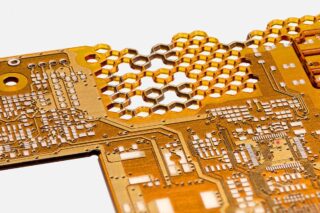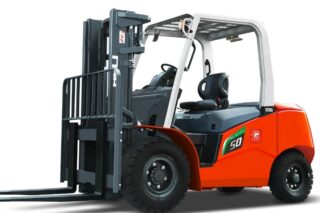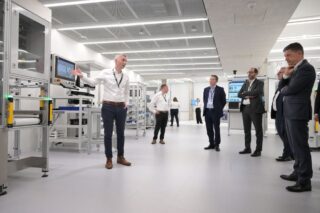DirectIndustry caught up with Professor Carlo Burkhardt of Pforzheim University (Germany) to discuss Europe’s industry readiness for recycled magnets, the legislative hurdles that still need to be overcome, and the potential for EU research projects to advocate for change.
Permanent magnets are crucial components in electronic devices, wind turbine generators, and hybrid-electric vehicle motors produced by European industry, and in deep demand. However the rare earth elements behind these magnets are often imported from east Asian countries such as China.
Recycling these rare earth elements-cased magnets can help Europe achieve its circular economy goals and protect European industry from market shocks. Carlo Burkhardt, Professor of Manufacturing Technology at Pforzheim University is an expert on recycling permanent magnets based on rare earths, and developing magnetic alloys.
He is working on several EU-funded projects such as Harmony and REEsilience, both of which are developing technologies for a recovery and recycling supply chain for rare earth magnetic materials and products in Europe.
This interview has been edited for length and clarity.
What is magnet recycling, and what does it entail?
Carlo Burkhardt: “Magnet recycling has three different factors. One that we were focusing on in the last few years is the technical feasibility of recycling magnets and finding the best route to recycle magnets with the smallest environmental footprint. Tremendous progress has been made here.
That’s one part of the of the story. The second is the collection of scrap and the liberation of magnets from the components. Compared to a lot of other materials, this is quite problematic.
Magnets are highly efficient and a vital functioning component – but that does not necessarily mean there’s a lot of it in the end product. For example, a smartphone needs a speaker, a microphone, a camera stabiliser, and so on. But this adds up in the best case to just five to 10 grams. Same is true if you if you look in cars and wind turbines; magnets are still only a fraction of the total weight and material. This means recycling something only for the magnet is just not commercially feasible.
In most cases, currently we don’t know what’s inside. It can be a neodymium magnet, a samarium cobalt magnet, or a ferrite magnet inside. These require different recycling technologies, and of course, each material has a different value. We also don’t have developed take back schemes. We don’t have developed magnet recycling in Europe.
The third is the production of magnets in Europe. They’re heavily subsidised, and they have an integrated market and value chain. You don’t necessarily have to make money with metal making, if you make money with selling the magnet in the end. It’s a highly distorted market if in Europe you can’t compete either with virgin or recycled material.”
READ ALSO
Are we getting close to a good value chain for recycled magnets in Europe?
Carlo Burkhardt: “I think we’ve solved the middle part – the recycling itself. Now we have to look into how to develop the circular economy, which comes with take-back schemes, component labelling, recycling design, and so on.
The second and probably most important part is that politicians give us a framework where it makes sense to build up a circular economy for these materials. It means the recycling operators have to earn some money.
Somebody has to kick start this economy, whether with subsidies, take-back schemes, or minimum prices when rare earths fall under certain threshold
For me, it’s important to convey the message that these are not just technologically critical materials – they are politically critical. If we talk about critical materials, the only stakeholder that has the key to unlock the potential is politics.”
You mentioned the technologies are pretty much in place to be scaled up – is there a lot of industry desire for these technologies?
Carlo Burkhardt: “Yes, there is an immense desire for getting sustainable and recycled magnets with the same properties – not for free per se, but at the same prices they pay for imported magnets from China. Remember there are large capacities in China, and so magnet prices are even falling.
The desire from industry is there, but they of course don’t want to pay extra for it. I don’t know how this will develop, because currently the critical raw material act is talking only about benchmarks. These are in no way legally binding, so until there’s something that forces the market to act, these benchmarks are just nice-to-have, it’s not turning the market.”
What do you think needs to happen short term to really build up that political support?
Carlo Burkhardt: “I think we have to establish a functioning method to make ourselves independent in a critical raw materials world. For me, that means we need incentives to produce in Europe, and there are different models that can work. You could say 5% has to be recycled, or the government says they’ll buy the yearly production of magnet recycling companies for three years for their own projects.
Something has to be done. Somebody has to reach a decision. Good ideas for Critical Raw materials can quickly get lost in execution.
For example, the Critical Raw Material Act says it will define strategic projects to go on a ‘fast track’ where they will have less bureaucracy. But if you look at Germany, we are a federation of 16 states, and these states have subdivisions. If you are setting up a production in the middle of this, there are about 20 different authorities that are involved. How will the European Union then decide that something is going on a fast track? It would be extremely difficult to enforce this.”
Do you feel these research projects also help to advocate for these changes, alongside developing new technologies?
Carlo Burkhardt: “It’s probably one of the roles of the Harmony project, REEsilience project, and the Passenger project to raise awareness of this with the stakeholders especially the political decision makers. That’s one of the main impacts of these projects from my point of view.
As a material scientist I can be deeply frustrated when the really big advancements we made in the last 15 years do not reach the market. 15 years ago, nobody believed that you could recycle a magnet. There’s a long way to go on the commercial side, because it’s expensive, and we’re in a highly distorted market. I still deeply believe in these projects, otherwise I wouldn’t be a partner. But it’s only one aspect to the whole story.”











